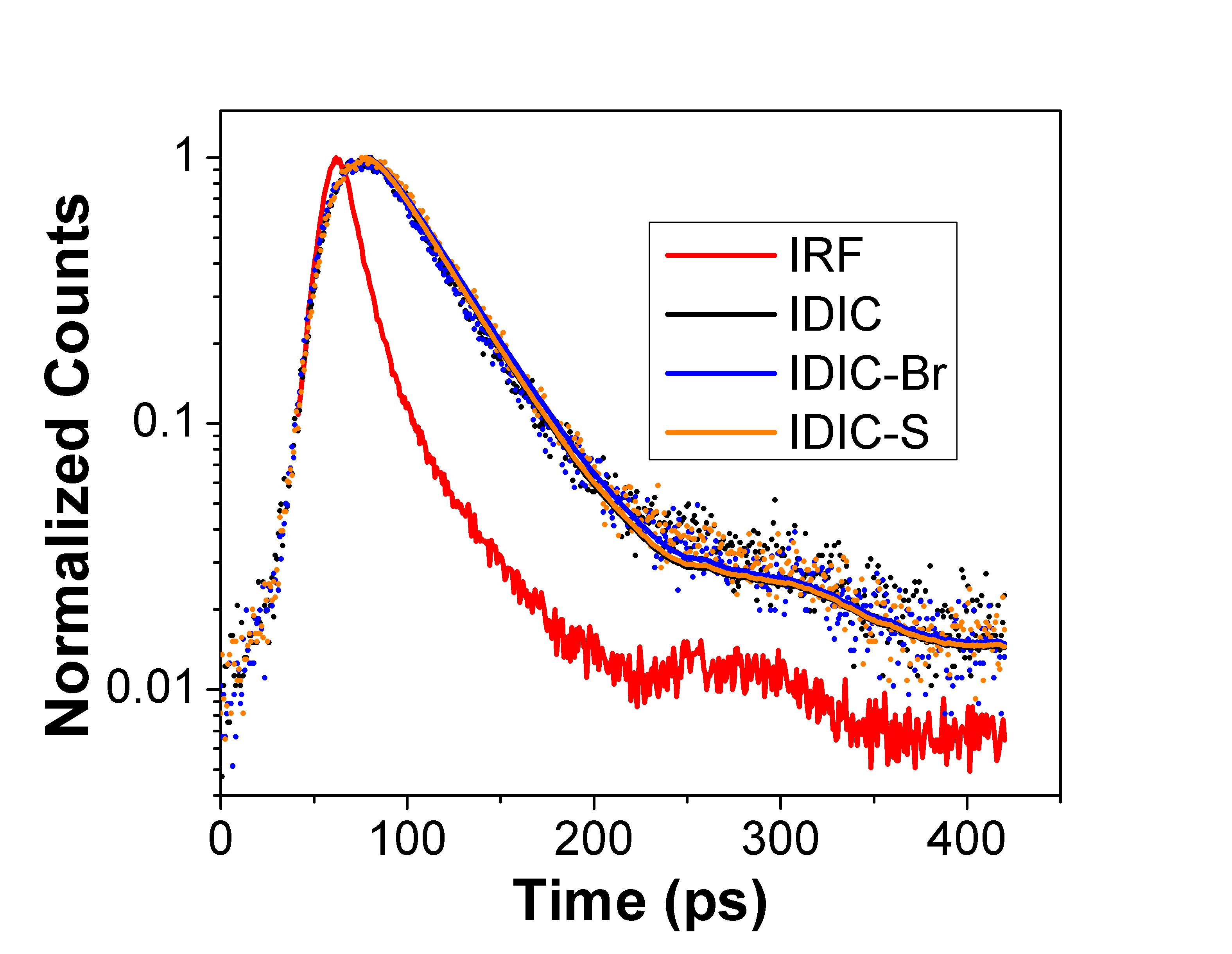
Paper published in ACS Energy Lett.
Heteroatoms as rotational blocking groups for non-fullerene acceptors in indoor organic solar cells
Chase L. Radford, Priyadarshani D. Mudiyanselage, Amy L. Stevens, and Timothy L. Kelly.
Organic solar cells are particularly attractive for indoor and low-light applications; however, photocurrents are low under these conditions, and devices are particularly sensitive to the presence of defects and trap states. A rotational blocking group is often added to non-fullerene acceptors to reduce both energetic disorder and the number of defects in the active layer. These blocking groups are most often alkyl chains, which require several synthetic steps to install; this inevitably lowers yields and increases costs. Here we report the addition of heteroatom-based blocking groups to the commonly used non-fullerene acceptor IDIC. These blocking groups are synthetically easy to install and highly effective; bromination leads to significant improvements in the efficiency of PTQ10:IDIC devices under both one-sun and low-light illumination. In contrast, thioether blocking groups improve efficiency under one-sun illumination but reduce it in dim light, highlighting the need to design and test donor:acceptor systems specifically for indoor applications.

